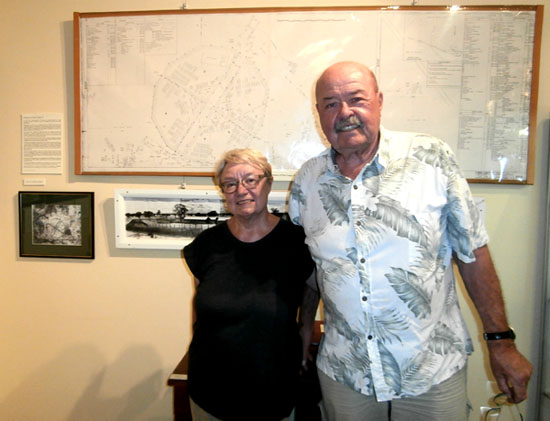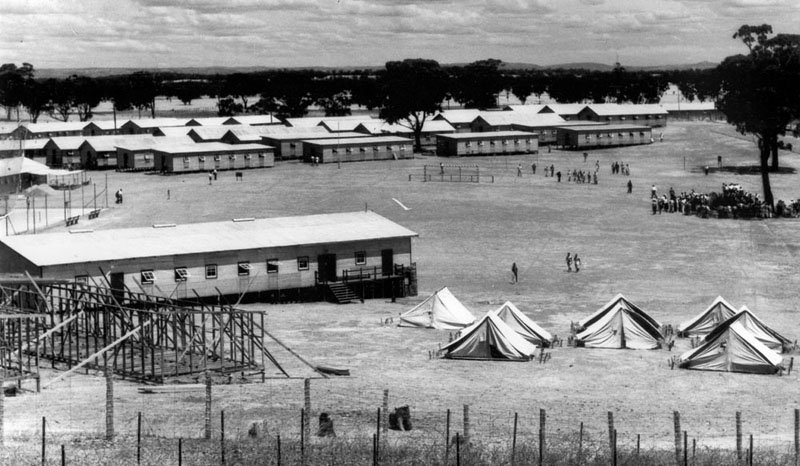Aus
"https://murchisonhistoricalsociety.wordpress.com" vom March 27, 2016
We have recently
had visitors from Germany at the Heritage Centre, keen to know about Prisoner of
War Camp 13.
Werner and Ursula
Alt travelled especially to Murchison to discover some detail about the Camp as
Werner’s uncle Friedrich Alt and Ursula’s father Heinz Ims were held in Camp 13
during the Second World War. We were able to show them items and documents
relating to the Camp, and they were very interested in the art work by Hans
Walter von Gruenewaldt.
Warwick Finlay
was able to show them where the Camp was located although a close look was not
possible as the Camp site is on private land.
Australian War
Memorial website and also National Archives website can provide documents and
photographs of POW’s from Camp 13 and we were able to introduce this source of
information to our visitors which they had not known about previously. Both
papers and photos are available for Friedrich and Heinz via these websites.
Werner and Ursula
were delighted to find out so much more than they had known before and will now
be able to fill in some detail about their family history.
Aus "https://vhd.heritagecouncil.vic.gov.au"
The Murchison
Prisoner of War Camp No. 13 was established hurriedly in 1941 on 2.5 square
kilometres of land, owned by the Hammond family, to accommodate thousands of
Italian and German POWs captured in North Africa and Greece during the Second
World War. They were later joined by Japanese POWs from Cowra, NSW and, in
addition, 'Dhurringile' was operated as German Officer POW accommodation as part
of Camp No. 13. The first prisoners, 4,000 Italians, arrived in early 1941,
prior to the camp's completion and were housed in tents. They were joined by
Germans and later Japanese in 1944. Many of the Italians were released in 1944
for local employment.
Little remains in
terms of substantial above ground structures, of the former Camp No. 13,
Crawford Road, Murchison, although the site potentially has archaeological
evidence and artefacts. The high security camp consisted of an octagonal shaped
plan, divided into four compounds. The entrance is marked by a stone gateway,
consisting of two coursed rubble piers, approximately 1.8 metres high, hung with
a pair of non-original Cyclone wire gates. Nearby, is located a small
single-storey coursed rubble sentry box with gabled roof clad with corrugated
galvanised steel. The only other extant structures above ground are two gaol and
a concrete machine gun emplacement.
The gaol each
comprises of two rows of cells flanking a central passage with only the off-form
concrete walls remaining. The site also contains numerous concrete slabs (remains
of the kitchen and ablution blocks and garrison areas); a stone and concrete
culvert, a small octagonal concrete fountain, a large below ground concrete
tank, a sunken fishpond, constructed of random rubble in a figure of eight
composition and memorials constructed by the German and Italian prisoners.
The German memorial,
erected by the crew of the raider Kormoran for their fallen comrades, comprises
a random rubble stone cairn on a concrete plinth with an inscription in German,
enclosed by a non-original post and wire fence. The Italian memorial comprises a
pair of masonry obelisks with concrete surrounds, remnant garden beds and a lone
Cypress tree, all enclosed by a post and wire fence. The remnants of camp access
roads are also discernible.


